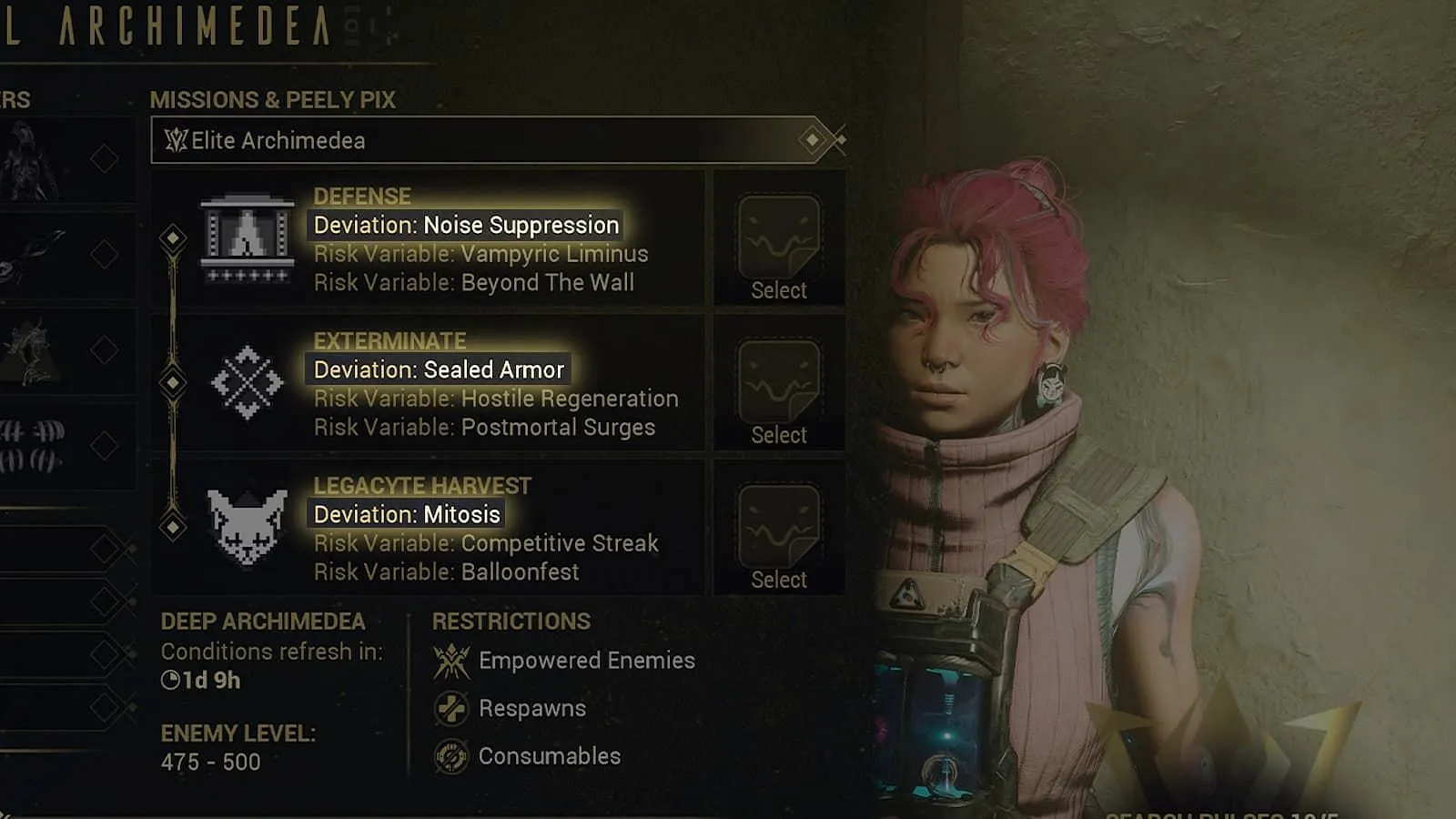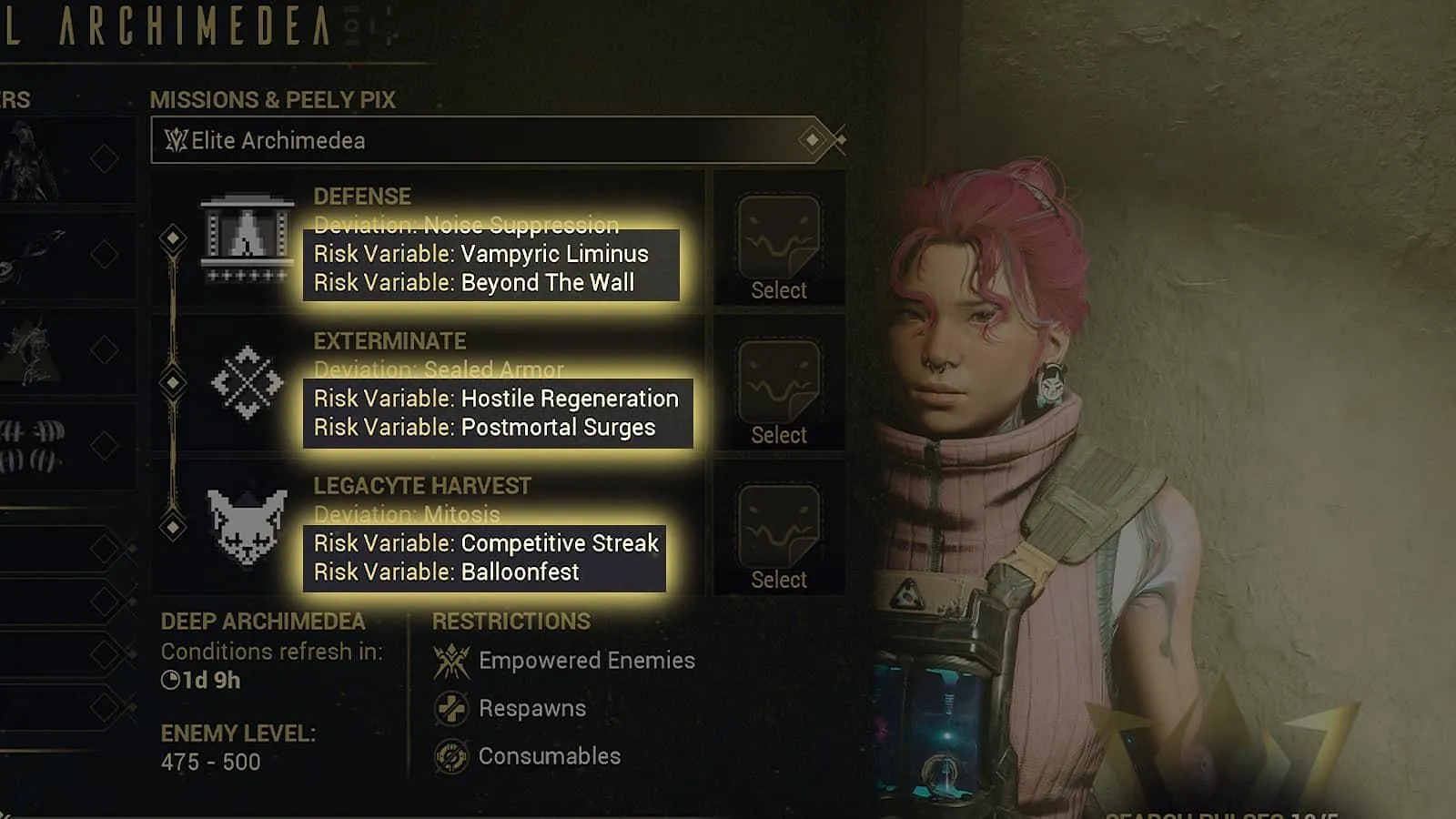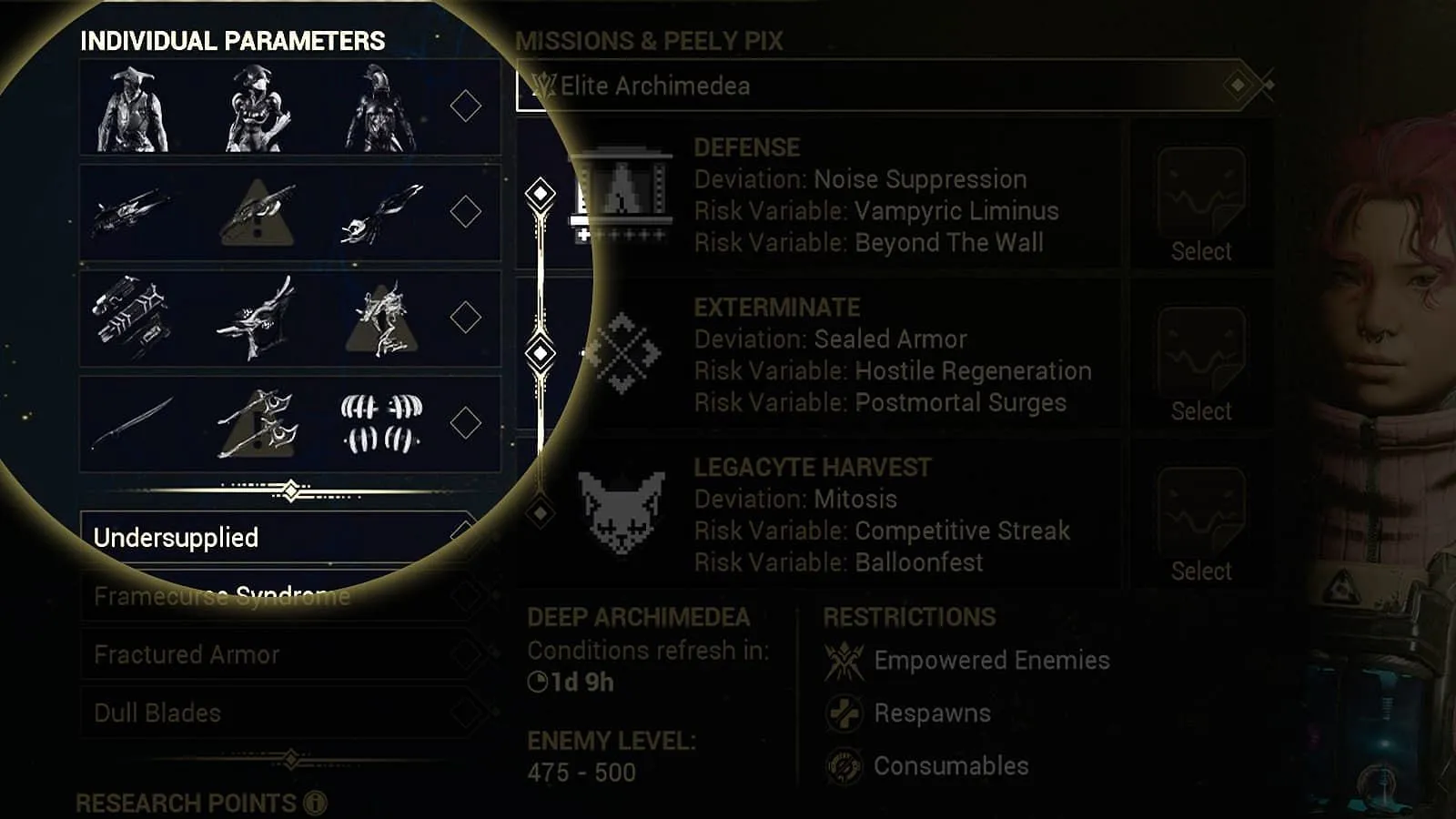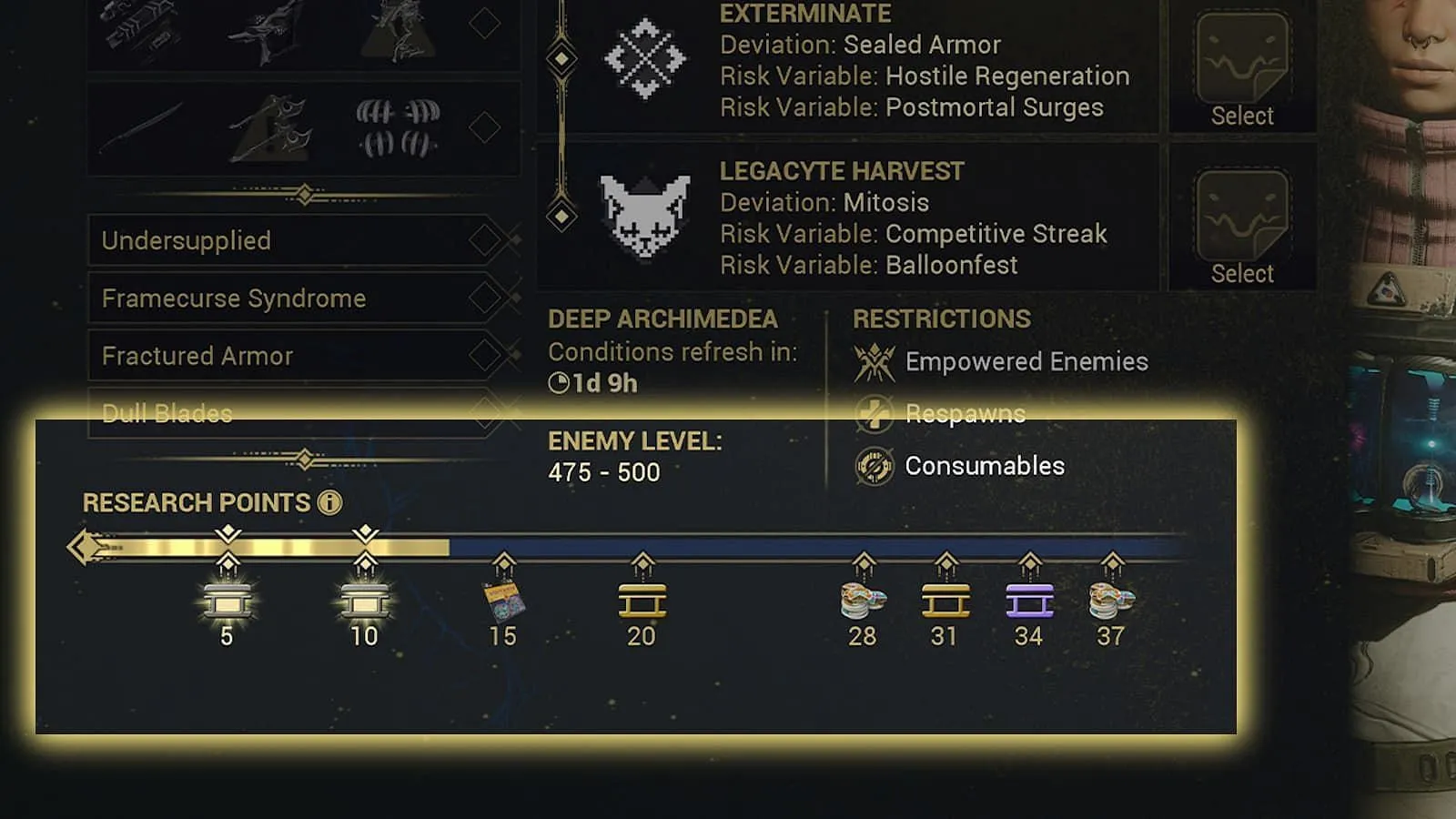Temporal Archimedea is an exciting new variant of the Deep Archimedea game mode introduced in Warframe’s Techrot Encore update. While it closely resembles the Entrati Lab’s Archimedia, it features a fresh redesign aligned with the Warframe 1999 theme. Players can expect unique debuffs, creative gameplay mechanics, and richer rewards, as well as a new mini-buff system dubbed Peely Pix, making Temporal Archimedea a more enjoyable and lucrative experience.
It’s worth noting that players must choose between the Elite versions of the two modes. To dive into Elite Temporal Archimedea, you’ll need two Search Pulses to start, similar to the requirements for Elite Deep Archimedea, with a weekly cap of just five Pulses available.
Even if you’re unfamiliar with the original Deep Archimedea missions released in 2023, this guide will thoroughly elucidate the mechanics and requirements necessary for engaging with this new content.
Unlocking Temporal Archimedea in Warframe

The Temporal Archimedea mode is specifically linked to Warframe 1999 content and can only be accessed via Hollvania. To reach this area, players must advance through the main story and successfully complete The Hex quest. Additionally, achieving at least Rank 5 (Pizza Party) within The Hex syndicate is essential.
It’s important to remember that completing The Hex Finale is not a prerequisite for unlocking Temporal Archimedea, so you can skip the Chemistry grind.
After attaining Rank 5 with The Hex, head over to Kaya Velasco located in the Hollvania Central Mall, positioned behind the concert stage, to access the Temporal Archimedea interface.
Understanding Temporal Archimedea’s Mechanics
Temporal Archimedea is structured as a series of three interconnected missions that require players to maintain the same loadout throughout. Its complex mechanics place it amongst the most challenging endgame content available in Warframe, similar to other Archimedea variations, particularly because of its hardcore death mechanics.
Death and Revival System
The process of dying in a Temporal Archimedea mission has stringent rules. Once your bleedout timer expires, self-revival is not an option. If another player revives you, your subsequent bleedout timer will shorten with every additional down, effectively penalizing players for dying multiple times. Entering Last Gasp mode with the Drifter or Operator will further reduce your timer by two seconds.
Resurgence Tokens: When a squad member dies, enemies will sometimes drop Resurgence Tokens. The remaining active player can collect up to five tokens to hack a terminal, which will revive a nearby fallen teammate if completed successfully.
Mortis Strikes: Each time a squad member dies, they accrue Mortis Strikes totaling up to three for every three minutes they remain dead. Accumulating three Mortis Strikes disqualifies that player from receiving any further mission rewards, although rewards from missions completed prior to receiving the third Mortis Strike will still be granted.
Mission Types and Deviations in Temporal Archimedea

Each mission type in Hollvania introduces specific difficulty-enhancing gimmicks known as Mission Deviations. Every mission will feature one associated Deviation that influences gameplay dynamics.
Exterminate Escalation
- Cache Crash: Opening a Supply Cache will have immediate consequences that escalate if opened, resulting in doubled kill requirements if left unopened.
- Sealed Armor: Enemies will take 90% less damage from non-weak point hits.
Hellscrub (10 Minutes)
- Hold Your Breath: The area inflicts Toxin damage over time, which intensifies the longer players linger, except near Hell-Scrubbers.
- Pile-On: Techrot enemies will try to melee attack Hell-Scrubbers, exploding upon contact and increasing contamination by 25%.
- Sporogenesis: Techrot Tumors spawn near Hell-Scrubbers and accelerate life support decay with every active tumor.
- Timer Reduction: Killing a periodic Babau will yield a Scaldra device to destroy a Hell-Scrubber, reducing the mission timer.
Legacyte Harvest (3 Captures)
- Mitosis: Each round spawns two Legacytes, doubling capture requirements for success.
- Growth Hormones: Increased power and delay for captures with each new generation.
- Parallel Evolution: Evolving Legacytes grants new abilities to other present enemies.
Assassination
- Reinforcements: Expect reinforcements during the fight, starting with Scaldra then Techrot foes.
- Toxic Tank: The tank emits a Toxin aura, fraying all allies within its vicinity.
- Thermian Plating: Only Thermian RPGs can damage the tank, which spawns during the battle.
Defense (6 Waves)
- Noise Suppression: Drones release Efervon gas on Flare.
- Miasmite Mash: Enemies drop Miasmites on death, subsequently rushing Flare.
- Vamp Rock: Flare creates disruptive energy fields draining player abilities while boosting its health.
Additional universal modifiers apply to all mission types:
- Increased Eximus unit spawns.
- Enhanced enemy defenses, with a maximum increase of 300% when in a squad.
- A 3-minute cooldown for all Restore items.
Risk Variables in Temporal Archimedea

In addition to mission-specific Deviations, each mission also includes a random Risk Variable. These variables can positively or negatively affect gameplay, allowing for diverse encounters.
- Temporal Archimedea includes one Risk Variable per mission.
- Elite Temporal Archimedea incorporates two Risk Variables per mission.
Examples of possible Risk Variables include:
- Hostile Regeneration: Enemies gradually regain health.
- Vampyric Liminus: Immortal Duviri Liminus drain health and energy from nearby allies.
- Bolstered Belligerents: Enemies gain additional Overguard based on health.
- Competition Streak: Random debuffs imposed from Amir and Aoi’s “Faceoff”mode.
Deviations and Risk Variables are randomly assigned with each weekly reset, while players have the option to introduce extra debuffs called Individual Parameters for the sake of achieving higher rewards.
Individual Parameters: Loadout Modifiers

On the Temporal Archimedea screen, a selection of loadouts appears, offering a choice among three Warframes, three primary weapons, three secondary weapons, and three melee options. Utilizing any highlighted equipment results in earning +1 Research Point for each completed mission.
Individual Parameters: Personal Modifiers
Every week, players will face four Personal Modifiers, which serve as toggleable debuffs that cycle during the weekly reset. Selecting any of these debuffs grants +1 Research Point per completed mission.
Potential personal debuffs include:
- Gear Embargo: Prevents gear usage.
- Powerless: Disables all abilities until 50 enemies are killed.
- Lethargic Shields: Increases shield recharge delay by 500%.
- Exposed: Reduces armor to zero.
By opting for multiple debuffs, players can earn a greater number of Research Points, which is the focus of our next discussion.
Understanding Rewards and Research Points in Temporal Archimedea

The primary objective in Warframe’s Archimedea modes is to accumulate the highest possible Research Points during a single play session. The progress bar displayed on the Temporal Archimedea screen highlights incremental reward tiers based on your successful runs.
Research Points do not accumulate; rather, the points earned during an individual run will dictate eligibility for rewards from that session. A successful run with 25 or more Research Points will permanently unlock the Elite Temporal Archimedea mode, allowing for maximum points per session.
Maximizing Research Points During a Run
Consider the following table to strategize how to gain additional Research Points in a single Archimedea run:
| Condition | Research Points (per mission) | Research Points (total for clearing all three missions) |
| Clearing missions in Temporal Archimedea | 1 | 3 |
| Clearing all three missions in Elite Temporal Archimedea | – | 10 |
| Loadout Modifiers | 1 each, +4 for selecting all | 3 each, +12 for selecting all |
| Personal Modifiers | 1 each, +4 for selecting all | 3 each, +12 for selecting all |
In standard Temporal Archimedea, players can earn a maximum of 27 Research Points, while the Elite variant allows for ups to 37 Research Points.
Reward Distribution in Temporal Archimedea
Temporal Archimedea serves up significantly richer rewards compared to other weekly offerings in Warframe, such as Archon Hunts and Netracells. However, players must understand two core rules of the reward distribution:
- Rewards are given based on reaching specific Research Point thresholds.
- Each week, only one of the reachable threshold rewards can be obtained, meaning clearing the 37 Research Points limit precludes further drops until the next reset.
Available Rewards in Temporal Archimedea
The table below outlines the Research Point thresholds and their corresponding rewards. Each threshold yields a single item from its respective loot pool.
| Research Points | Threshold Reward | Possible Drops |
| 5 | Silver Cache |
Arcane Escapist, Arcane Hot Shot, Elemental Vice, and more.
|
| 10 | Silver Cache |
Arcane Escapist, Arcane Hot Shot, Elemental Vice, and more.
|
| 15 | Peely Pix Pack |
3x Peely Pix Stickers (duplicates grant a Pix Chip).
|
| 20 | Gold Cache |
Includes various Arcane and Shard rewards.
|
| 28 | Pix Chip Pack |
6x Pix Chips to purchase goods from Kaya Valesco.
|
| 37 | Second Pix Chip Pack |
9x Pix Chips for Kaya Valesco’s inventory.
|
Introduction to Peely Pix
Unique to the Temporal Archimedea mode, Peely Pix represent collectible stickers that provide minor buffs to individual missions. Players will receive five random Peely Pix Stickers once they complete their first Temporal Archimedea run using Search Pulses. Additional stickers can be obtained by achieving 15 Research Points during a run or from Kaya Valesco’s shop inventory.
Collecting duplicates of a Peely Pix Sticker allows players to upgrade it to rarer tiers, such as Sparkly and Chromatic, mirroring the upgrade process for Arcanes.
That’s a comprehensive overview of the Temporal Archimedea mode in Warframe. Happy gaming!


